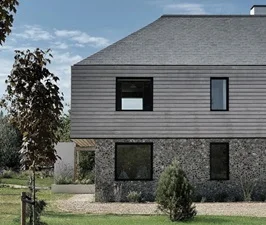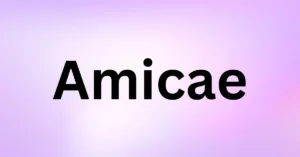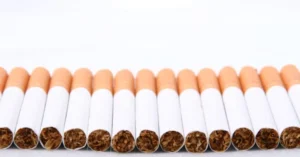Outdoor cladding can provide additional insulation, weatherization and protection. It can also improve the overall appearance of a home’s structure. More and more homeowners are choosing cladding for their exteriors. But how do you choose the best exterior cladding?
In order to choose the right exterior cladding, you should consider different materials, finishes, appearances, and colors. Start by determining which parts of your home or building need exterior cladding. You need to pay special attention to which areas are more susceptible to extreme heat, cold, rain, or sunlight.
Know your climate
The local climate is a factor you need to focus on when choosing a cladding for your home. Different materials have different resistance to climatic conditions. In wet installation environments, cladding with moisture resistance is even more important.
Composite cladding offers enhanced stability and weather resistance. Composite material is made from a blend of wood and plastic fibers for improved stability and durability. Composite wall cladding is therefore suitable for both wet and dry climates.
Evaluating aesthetics
The type of exterior cladding you choose can have a big impact on the aesthetic appeal of your home. Whether modern, natural, or traditional, cladding can achieve the desired style. For example, vertical cladding creates a modern look. Horizontal cladding, on the other hand, provides a timeless and traditional look.
Composite cladding can be installed in any way, including vertical, horizontal, and diagonal. With straight edges and concealed shadow gaps, cladding provides a stylish and modern finish. And exterior cladding can be customized to suit your aesthetic preferences.
If your goal is to achieve immediate gray exterior cladding. composite cladding cladding is an elegant and low-maintenance solution.
Consider aftercare
Maintenance and care is another key factor to consider when choosing cladding. Some materials require regular maintenance to keep them looking and functioning. Others, on the other hand, require less maintenance. Traditional wood cladding may require regular sanding and staining to protect against weathering and UV radiation. Composite cladding requires only simple cleaning to maintain performance.
Composite cladding is made with modern craftsmanship. This not only improves the performance of the product but also requires less maintenance. This means that you can enjoy the beauty of the cladding without the need for frequent maintenance and upkeep. However, before cleaning your composite cladding, please read the maintenance guidelines provided by the manufacturer.
Assessing durability and longevity
The durability and longevity of the cladding is also a factor to focus on. Especially in areas with harsh climatic conditions. Cladding that stands the test of time and stress will provide better value and protection for your home.
Composite offers excellent durability and longevity compared to untreated wood. composite material has a lower wood content, making it less likely to warp, crack and rot. This ensures that your cladding will remain beautiful and functional for decades.
Color
There aren’t many design choices that are as important as color, especially when you’re cladding your home! When it comes to cladding colors, we think solid wood always looks best, but composite has a wider variety of color options.
Reddish Brown: Reddish brown is one of the most popular house cladding colors of all time. It comes in attractive warm reds, browns, and oranges. It can add character and natural beauty to almost any home. These shades can complement or contrast with your home’s exterior brick walls.
Gray: Clean and understated, gray cladding is also a popular trend. Gray is popular among design-oriented DIY enthusiasts and architects. Gray cladding is clean and simple with a Scandinavian feel. It can easily create an atmosphere that blends in with nature. Grey is a versatile neutral background that can be combined with any color.
You can achieve the gray look by letting quality wood weather naturally. You can also purchase composite cladding products. This ensures that the cladding is a high performance product with an even, professional finish.
Choosing the right installation orientation
The installation of cladding directly affects the appearance and performance of your home. Vertical, horizontal, and diagonal orientations each have unique aesthetic and functional benefits.
Vertical cladding creates a nice sense of height and modernity. Horizontally installed cladding provides a classic and timeless look. Diagonal cladding provides a unique and striking design. Most manufacturers’ composite cladding can be installed in different orientations to meet customer design preferences.
Conclusion
In conclusion, there are many factors to consider when choosing external cladding. These include cladding materials, aesthetics, maintenance, and durability. We believe that after these considerations, you can choose cladding that adds to the beauty and utility of your home.
Overall, composite cladding offers a sustainable, durable, and aesthetically pleasing solution. With exterior cladding you can create the perfect look for your home while enjoying its benefits.
For more information click here.









